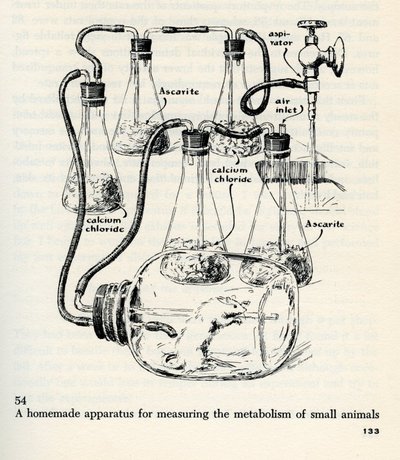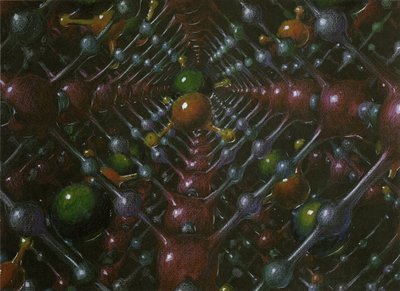Roger remained very busy well after his official retirement from architecture, illustrating for Scientific American - including work for The Scientific American Book of Projects which was published in 1960 by Simon and Schuster. While his relationship with the magazine and C. L. Stong remained strong throughout the decade, there was a brief falling-out between the two when Roger abandoned a glassblowing book project after he foresaw significant difficulties arising from the interactions of a third partner. Towards the end of the decade, he switched from pen to pencil drawings, in part due to the growing shakiness of his hand, but also from the extra effort that was expended in completing his illustrations in pen. The staff members at Scientific American were very supportive of the switch and suggested that the change in style would be appreciated aesthetically by readers, as well.
While some projects that Roger managed to complete during his contract with W. H. Freeman & Co. began to appear early in the decade (Harper and Malm’s Essentials of Chemistry in the Laboratory, for example), his relationship with Bill Freeman was temporarily soured following their bouts over the failed contract a couple years prior. Some published projects that appeared early in the decade were affected by Roger’s conflict, including Introduction to Electromagnetic Fields and Waves, a 1962 text by Corson and Lorrain, which had been partially illustrated by Roger before cancellation of his contract and did not list his name as an illustrator.
Around 1964 W. H. Freeman & Co. was bought and merged with Scientific American, and Freeman resigned from his executive position. Roger once again worked on W. H. Freeman & Co. projects, including several revisions and new editions of Pauling’s books, such as College Chemistry, General Chemistry, Essentials of Chemistry, and Chemical Principles in the Laboratory. The big success of the 1960s, however, was The Architecture of Molecules, a joint Pauling-Hayward endeavor released in 1964. The book received very positive reviews, generous sales and marked a pinnacle in Roger’s publishing career. In addition, he was approached to help edit the script of a short documentary called “A Search for Understanding,” a film that focused on the historical development of technology and the advancement of modern human thought.

Reproduced illustration by Roger Hayward of a metabolism-measuring device as published in The Scientific American Book of Projects for the Amateur Scientist, by C. L. Stong, 1960. More images here

Reproduced illustration by Roger Hayward of a molecule as published in The Architecture of Molecules, by Linus Pauling, 1964. More images here
